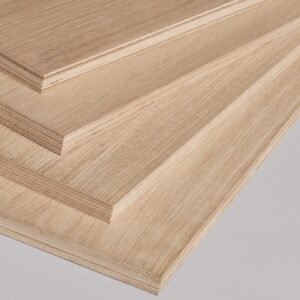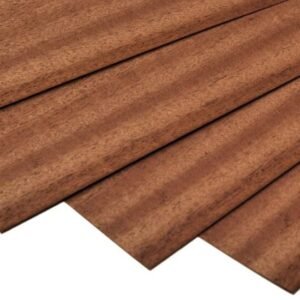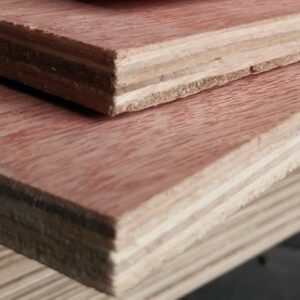Description
Wenge Plywood
Beautiful hardwood called wenge plywood is primarily found in Tanzania and Mozambique in Africa. African Rosewood is another name for it because of how similar it looks to other types of Rosewood.
The heartwood has deep, dark streaks of black color throughout. Because of its exceptional hardness and density, it can be used in place of ebony. In fact, oiling the wood makes it appear completely black, serving as a visual equivalent to ebony. Due to its shock resilience, it is also said to make a decent hickory alternative in sports bats. However, due to its rarity, it is not frequently utilized in that manner. Wenge wood is used to make certain beautiful instruments.
Although the wenge tree only reaches heights of 60 to 90 feet, its trunk will have a diameter of three to four feet. Sadly, over the past three decades, its range has decreased by around 50%, most likely as a result of excessive harvesting for the woodworking industry and a lack of replacing what has been removed. We can anticipate a price increase for the wood as the tree becomes even more threatened.
Unfortunately, because of its limited range and popularity, the wenge plywood is listed as endangered. Wenge is still available for purchase in a number of forms, and the cost is currently comparable to that of purchasing any other hardwood and unquestionably lower than that of purchasing exotic hardwoods. However, because so little solid wenge makes it to the United States, it might be difficult to locate wenge in boards or turning blanks for the lathe.
Turning blanks were only offered by one online retailer, which I was able to locate. Instead, the majority of wenge that does arrive is found in laminate flooring, hardwood plywood, or veneer. Veneer is not hard to find, but wenge plywood is.
Wenge’s density and toughness make it perfect for use as cabinets or flooring since it resists denting.
Wenge that has been dried out is very robust and resilient and does a good job of fending against termites and decay. Few types of wood can boast that their timber is so dense that it doesn’t even float in water.
However, the wood is difficult to work with and will dull blades considerably more quickly than other hardwoods because of its extreme hardness.In light of this, using wenge plywood or veneer is really preferable because the completed product will still have the strength and beauty of wenge while being simpler to cut and work with. Wenge plywood is a rare wood, therefore it might be best to think about using another wood instead unless you really require its unique properties for the project.
A respirator or dust mask should always be worn when working with wenge since the wood’s toxic dust can trigger allergic reactions in the respiratory system. Although there is no proof that inhaling the dust can be lethal, the symptoms it causes can momentarily incapacitate the woodworker.
<< Click Here To Contact Factory >>

Wenge Plywood Features
- Wenge appears attractive and cheerful.
- With a MOR of 16,200 psi and a MOE of 1.97 m psi, it is extremely stiff and powerful.
- Large variety of sizes, uses, and widths available.
- It is dense and won’t easily absorb water.
- Extremely strong, termite- and moisture-resistant.
- Both inside and external uses are appropriate.

Application
Wenge has stunning dark brown veins that are incredibly close together and delicate. Wenge is extremely robust and abrasion-resistant. often used for joinery on both the inside and the outside, as well as for flooring. Additionally, it makes a superb turning wood.
Environmental
In comparison to materials like concrete, steel, or plastic, wood-based materials like wenge plywood have a lighter carbon footprint. As trees grow, they take in carbon dioxide (CO2) from the air, which is then stored in the wood. Carbon is efficiently sequestered and kept out of the atmosphere by using wood products like wenge plywood, which helps slow down climate change.










